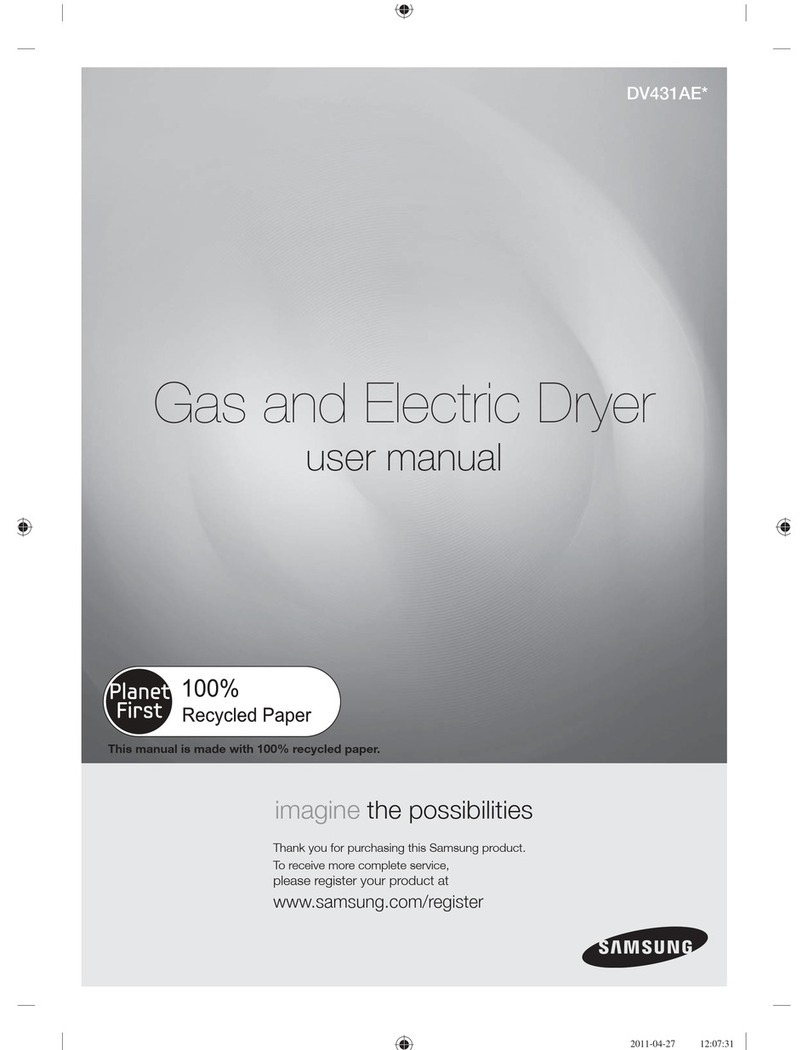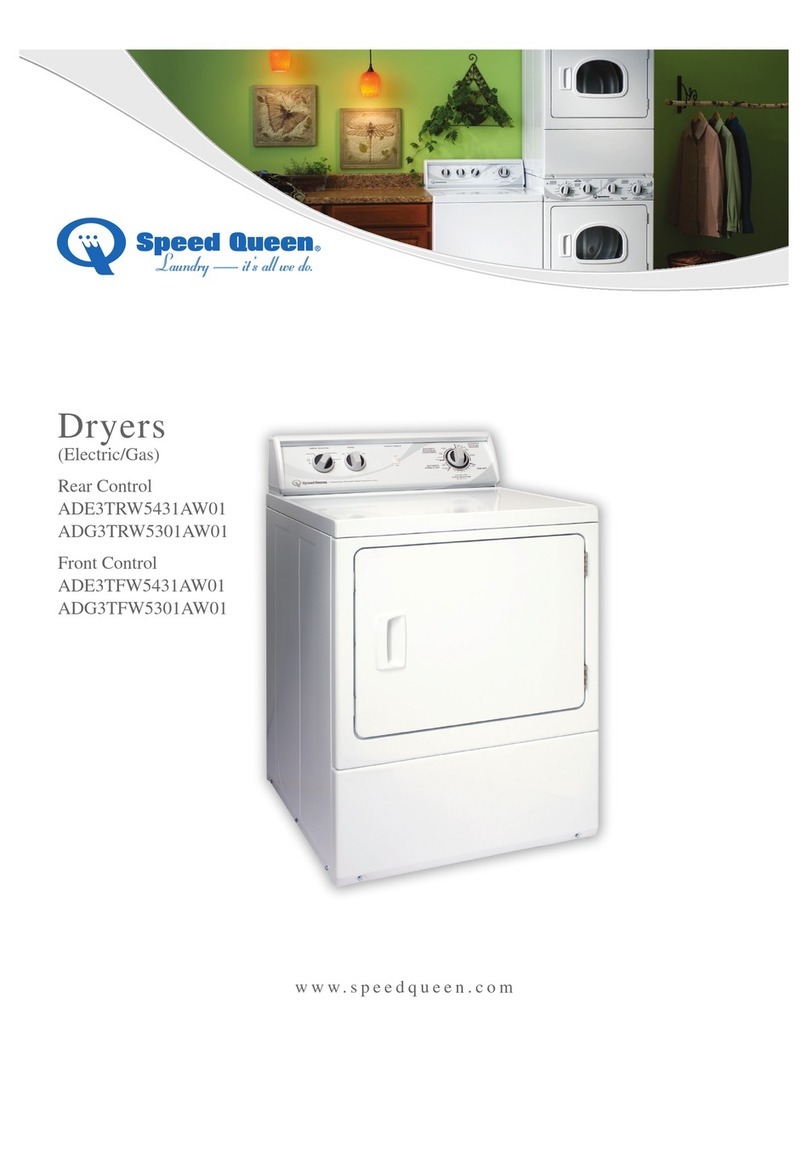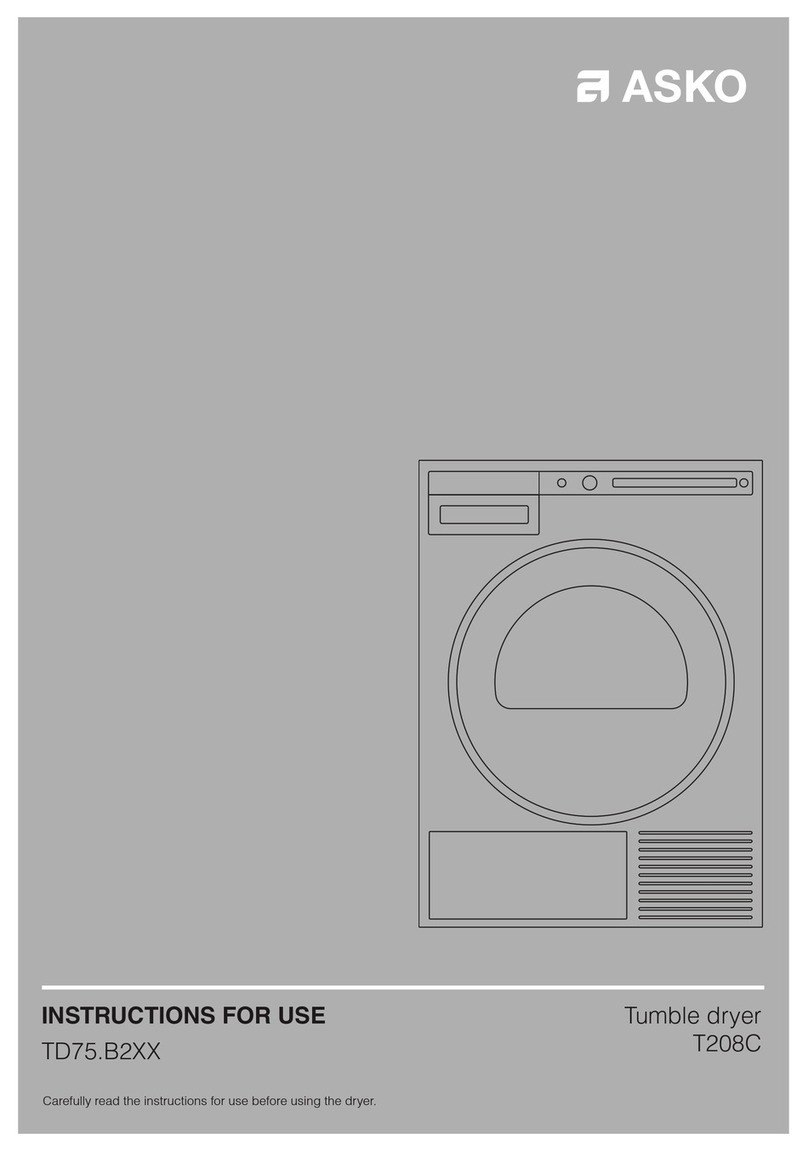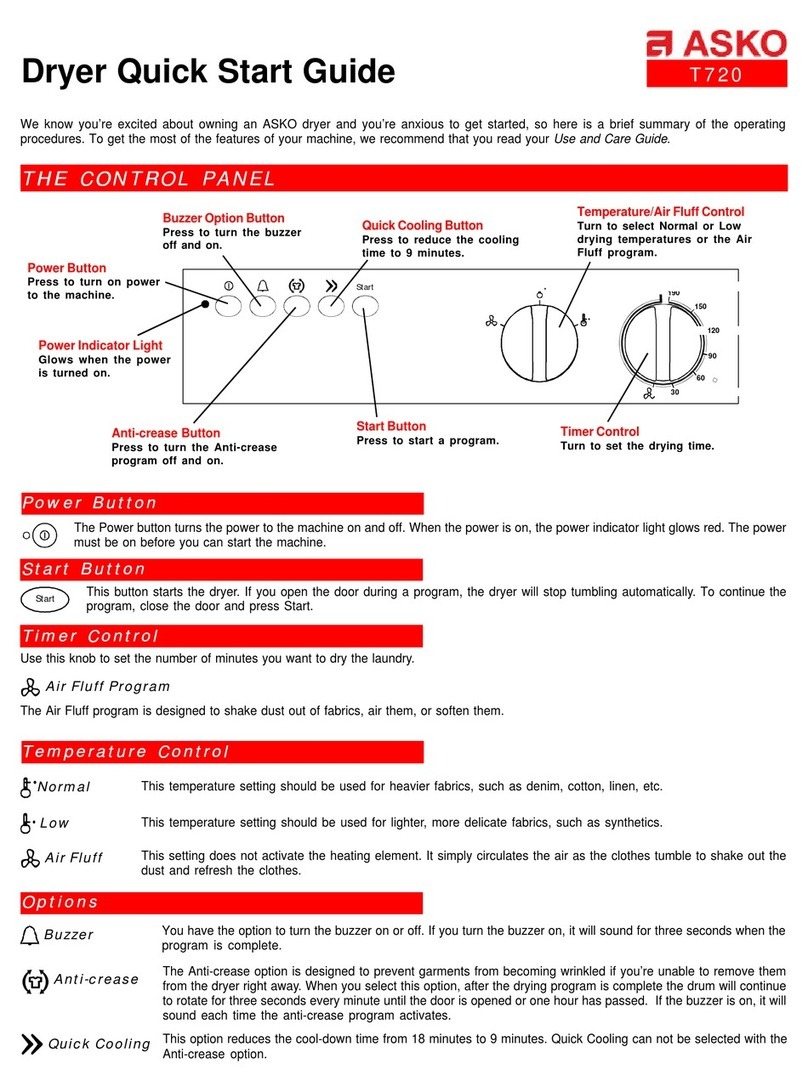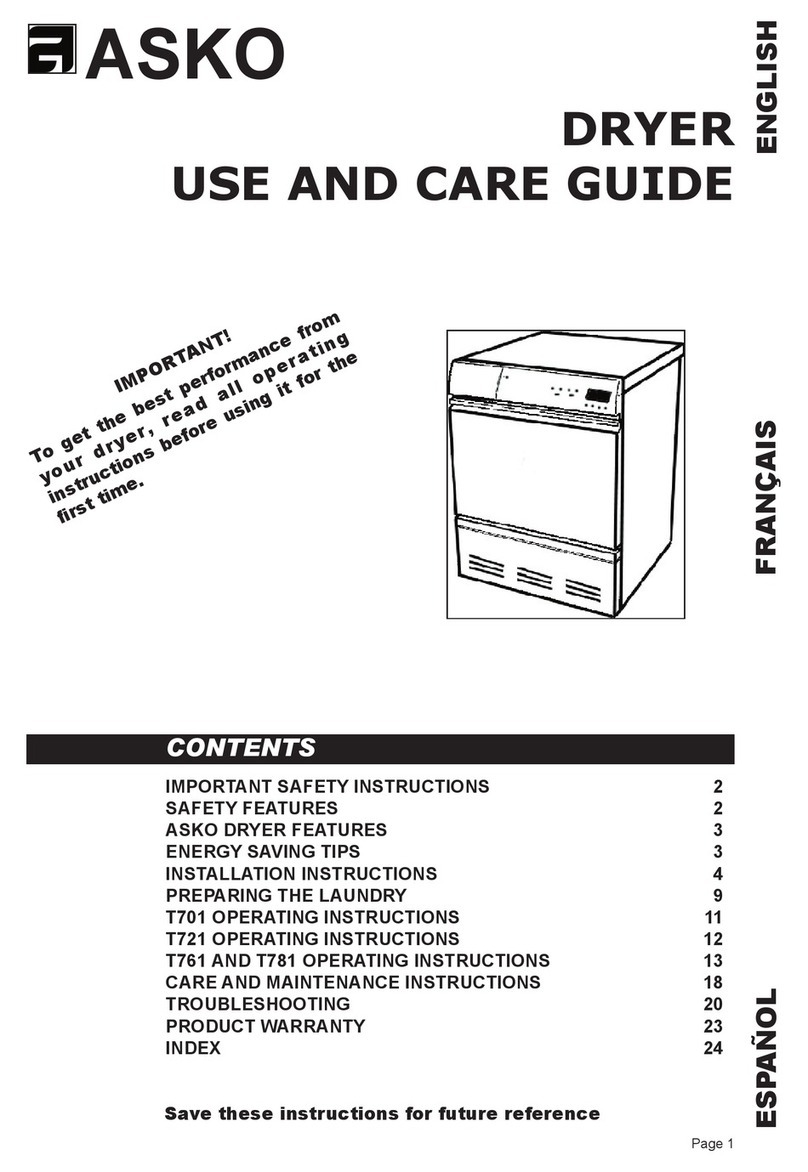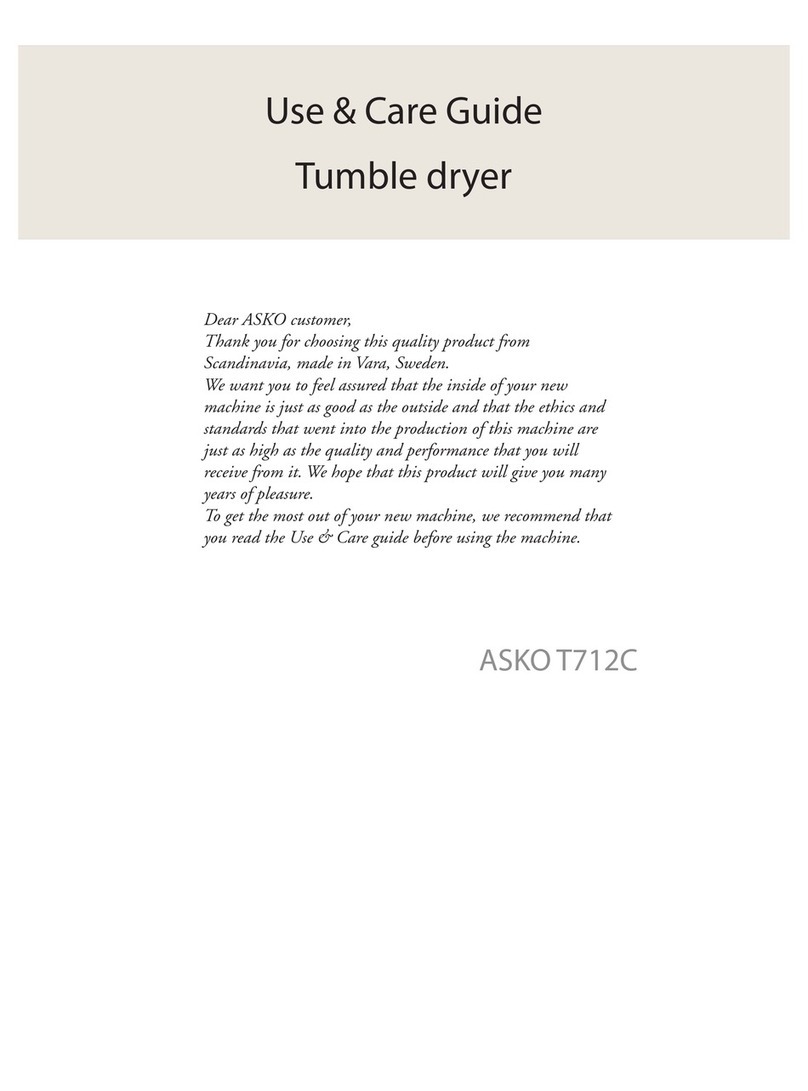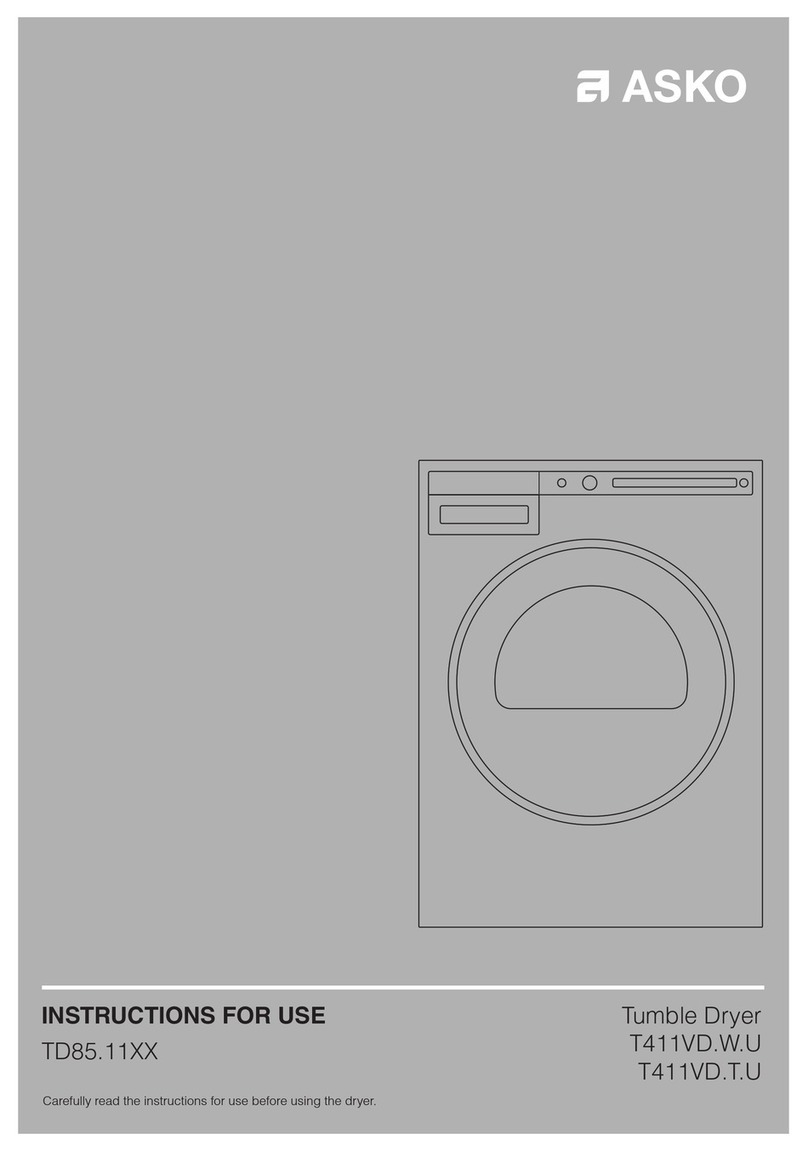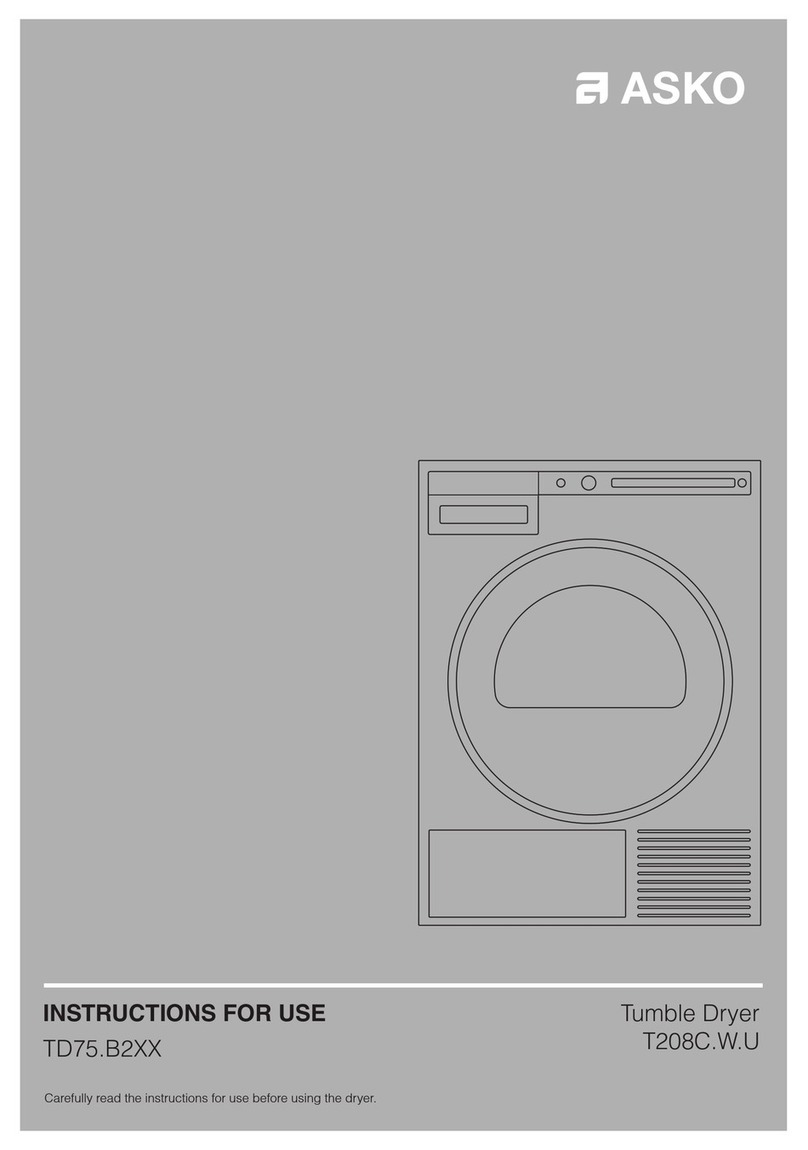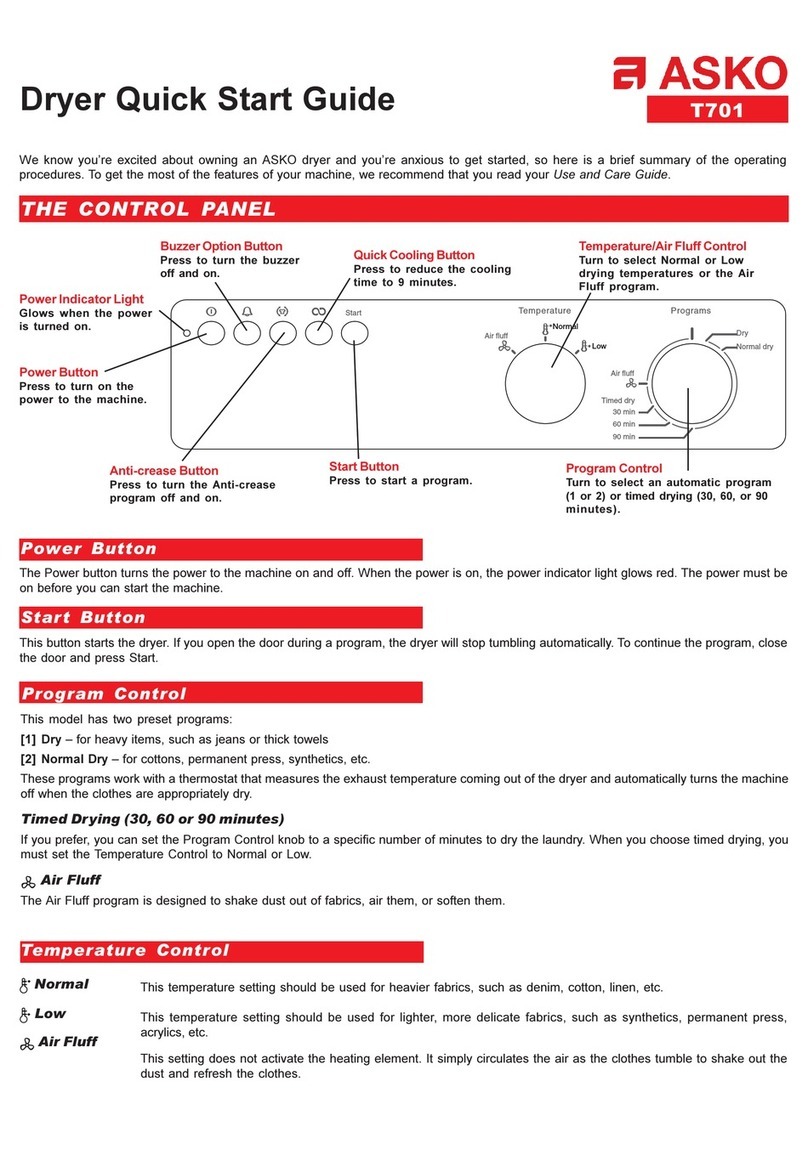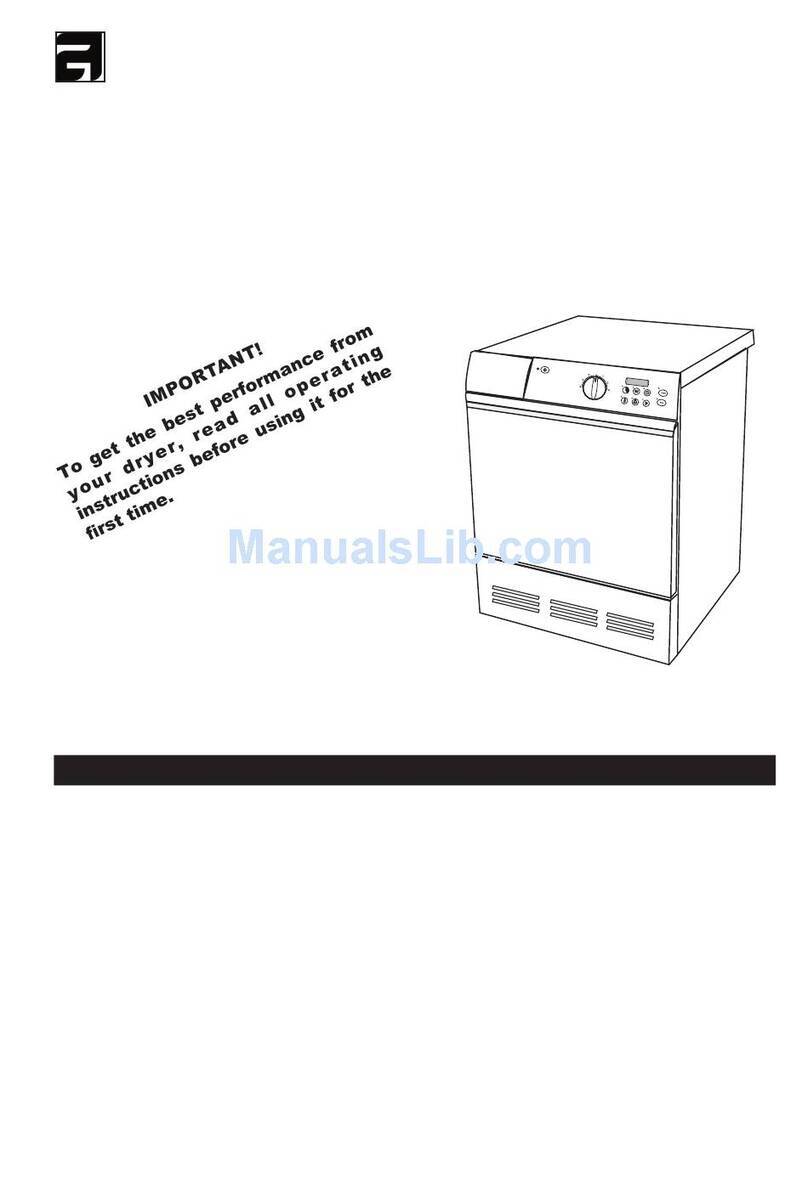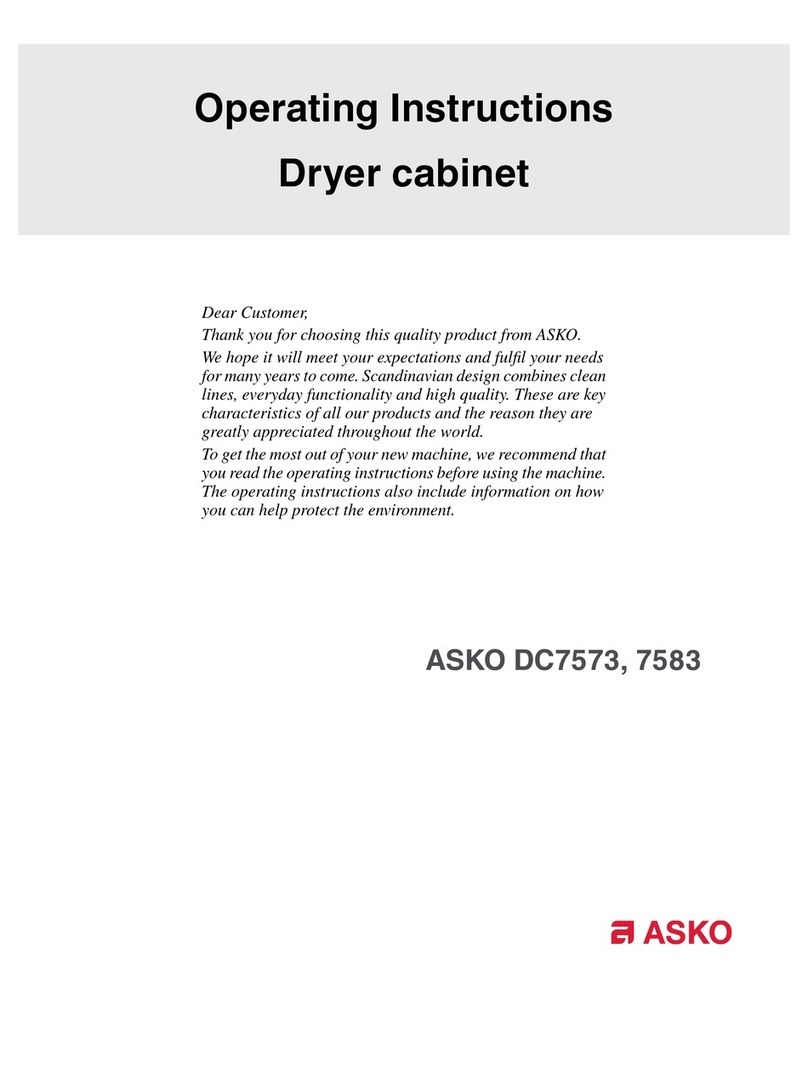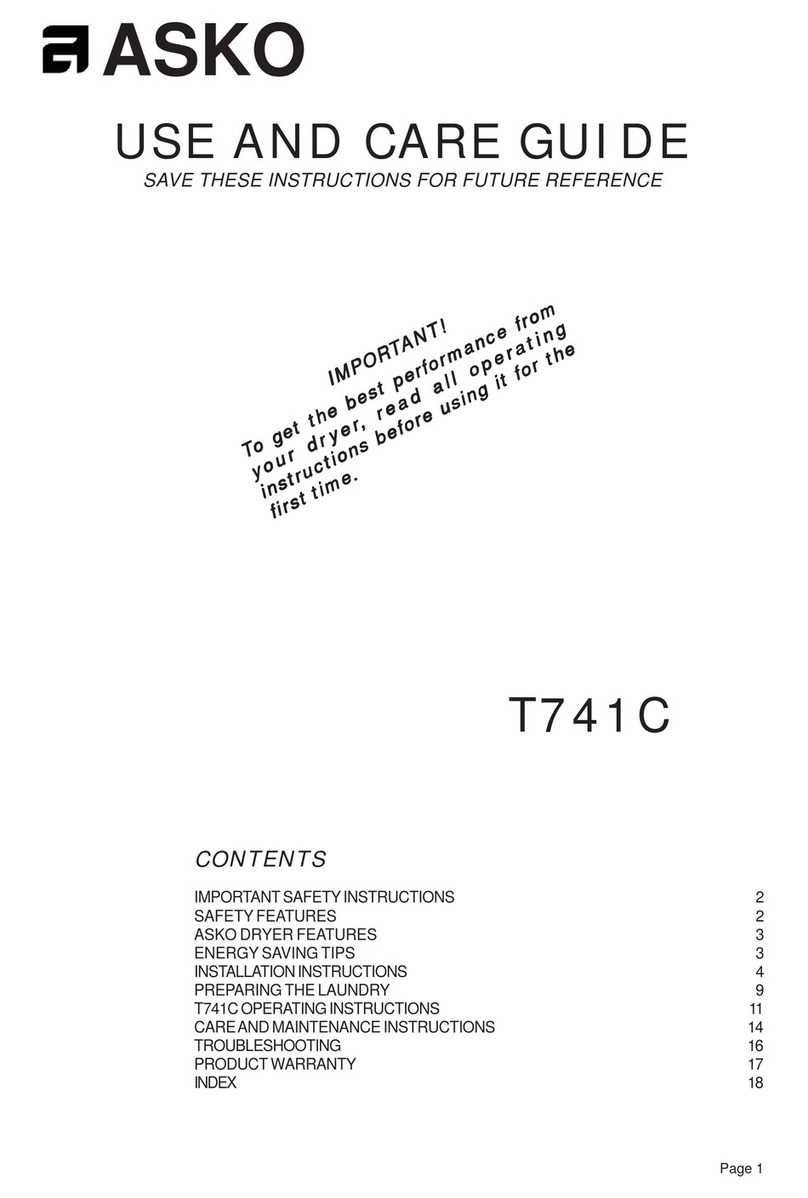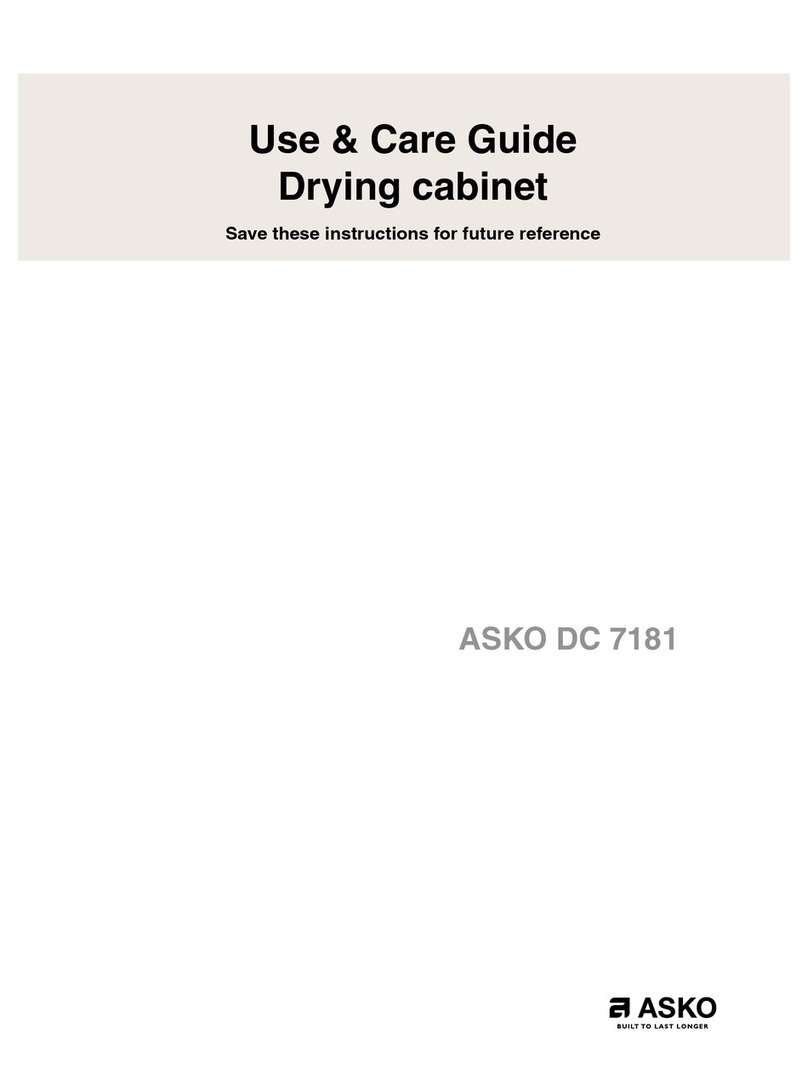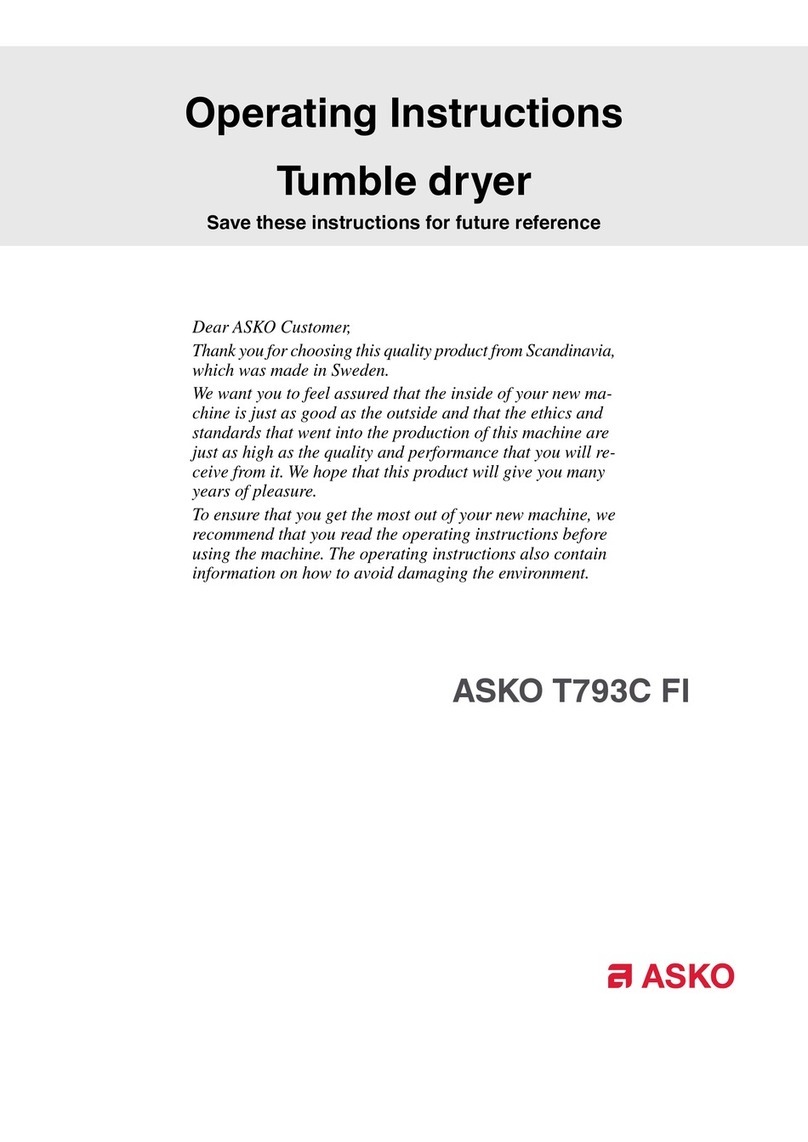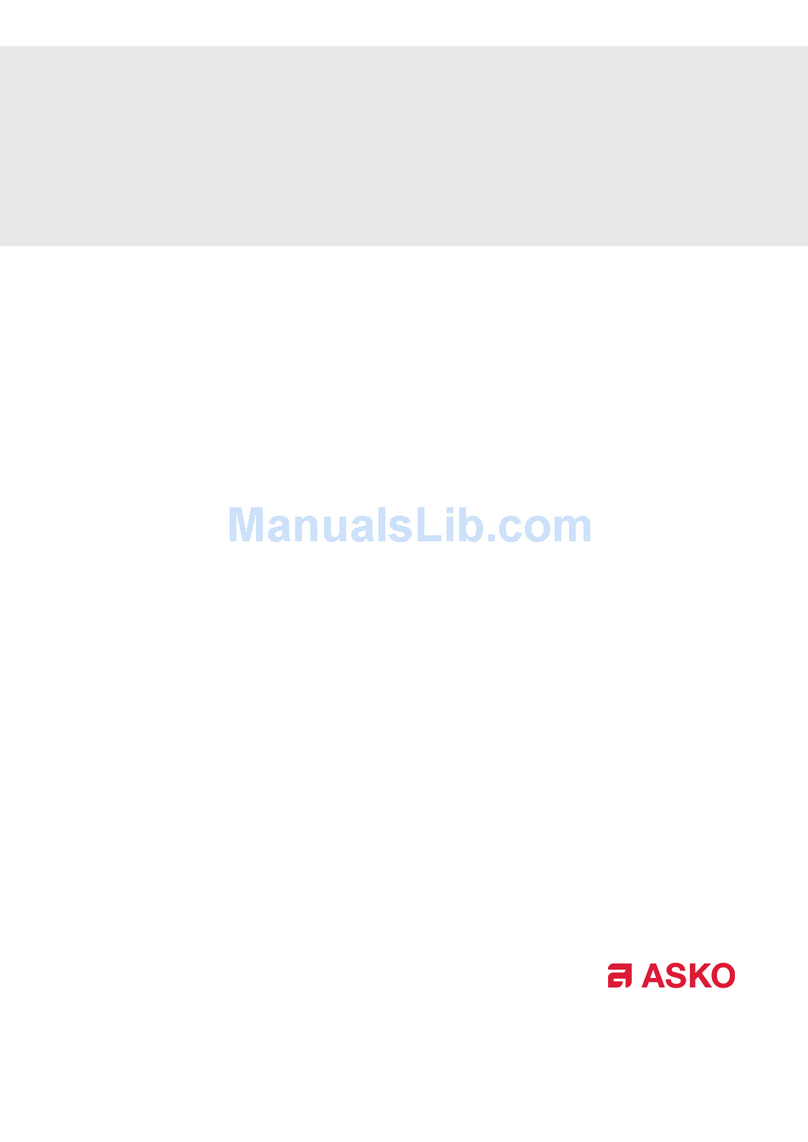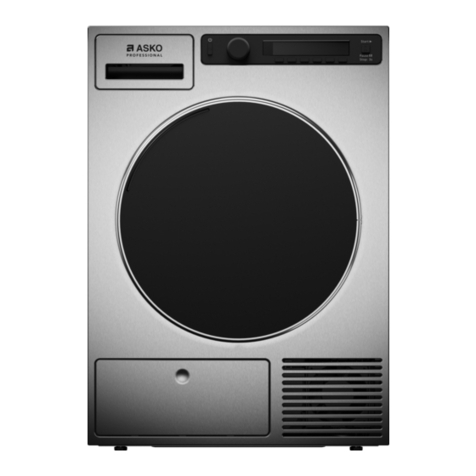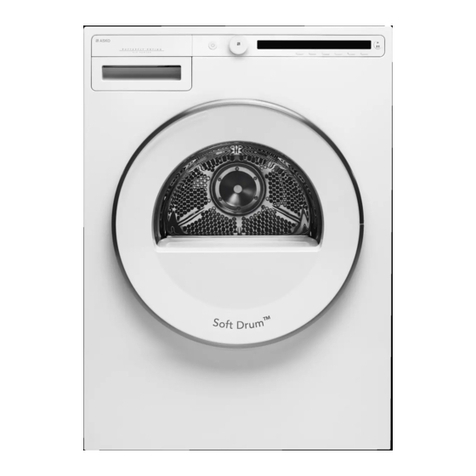
12
INSTALLATION
ABC
A
AIR EXTRACTION (T700/760)
The exhaust air from the tumble drier should be
taken to an exhaust duct or a wall outlet with the
aid of the accompanying air extraction hose.
Connection to the tumble drier
The tumble drier has three possible air extraction
points: the rear, right or left side. On delivery one
of the holes is open, and the other two are closed
by covers.
The tumble drier is delivered with a connec-
ting flange (A), a plastic ring (B) and an air ex-
traction hose (C).
Install the air extraction system as follows:
1. Push the air extraction hose on to the connec-
ting flange and secure it with the plastic ring.
2. If necessary, remove the plastic cover from the
hole where you want to connect the hose.
3. Insert the connecting flange and air extraction
hose into the chosen hole.
4. Close the other two holes with the plastic
covers.
Connection to exhaust duct
The air extraction hose must be routed the short-
est possible way and as straight as possible from
the tumble drier to the exhaust duct. Cut the air
extraction hose if it is too long. If necessary the
air extraction hose can be extended by up to a
maximum of 8 metres (inner diameter 102 mm).
If a longer hose is needed, the inner diameter must
be increased in order to retain the fan capacity of
the tumble drier.
Any bends must be made as gentle as possible.
If 90º bends are necessary, there should be no more
than four. Each bend reduces the fan capacity of
the tumble drier.
If the air extraction hose leads to a wall outlet,
the entry of cold air can be cut down by installing
a ventilation grille (part no. 92 059 00).The ven-
tilation grille can be installed either outside or
inside.
If there is only one exhaust duct leading from
the room a draught break (A) must be installed
(part no. 92 059 01).










